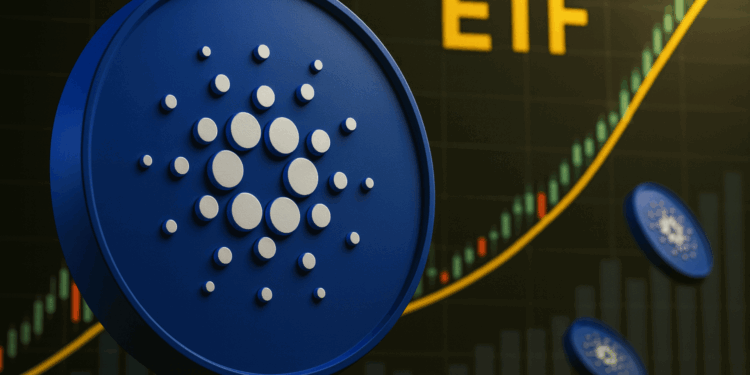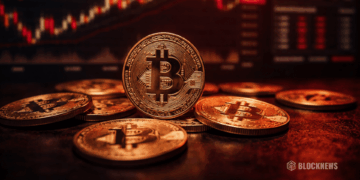- Cardano is now officially a “mature blockchain,” clearing a major hurdle for a potential U.S. spot ETF.
- ETF approval odds for early 2025 are high, with institutional interest and product development reportedly underway.
- The Midnight sidechain, governance upgrades, and ecosystem growth could combine with ETF momentum to drive ADA toward the $10 mark.
Bitcoin had its moment. Ethereum followed. Now? It might be Cardano’s turn. After years of quietly building and refining, ADA could be on the verge of something massive—a U.S. spot ETF. And unlike past rumors, this time the puzzle pieces are actually falling into place.
Between newly passed crypto legislation, institutional interest, and the launch of Cardano’s powerful Midnight sidechain, the momentum is building. This isn’t just retail buzz anymore. It’s policy-aligned, fund-friendly, and technically ready. The only thing missing is the spark.
Here’s why Cardano might be the most underpriced ETF play on the market right now.
Mature Blockchain Status: What That Means (and Why It’s Huge)
Let’s start with something big that most people missed: Cardano was officially named a “mature blockchain” in Trump’s recently signed Clarity Act. That puts it in the same category as Bitcoin and Ethereum—recognized for its decentralization, transparency, and governance.
What’s that mean exactly? In short, ADA isn’t a security. It’s a commodity. That’s a massive deal because it means the SEC has no reason to block an ETF based on Cardano anymore. The CFTC would take over oversight, which historically has been a lot friendlier to the crypto space.
And Cardano didn’t land that title by accident. It checks all the right boxes—fully decentralized staking through Ouroboros, an on-chain governance roadmap through the Voltaire phase, and no central entity controlling the majority of supply. Unlike BNB or even Solana, which still struggle with centralization FUD, Cardano fits what U.S. lawmakers now want to see in a crypto network.
Bottom line? This label might be the key that unlocks institutional access to the Cardano ecosystem.
An ETF Approval Could Happen Sooner Than You Think
A Cardano ETF sounds ambitious—but here’s the wild part: it might be months, not years, away.
After Bitcoin and Ethereum spot ETFs cleared the regulatory maze, the SEC now has a blueprint. Add in Cardano’s “mature blockchain” status, and it’s clear the path is wide open. According to Polymarket odds, the probability of a Cardano ETF by early 2025 has been hovering above 70%, climbing as legislative clarity sets in.
But it’s not just speculation. Behind the scenes, several financial giants are reportedly working on Cardano-based products. Rumors are circulating about Grayscale prepping a Cardano Trust ETF filing. And Charles Hoskinson? He’s allegedly been consulting with D.C. policymakers behind closed doors.
That’s not nothing.
ETF approval isn’t just regulatory rubber-stamping—it’s a liquidity unlock. It opens the floodgates to pensions, brokers, 401(k)s, hedge funds… the kinds of buyers who don’t want to mess with wallets and exchanges but have trillions of dollars to deploy.
If this approval comes through, ADA could go from being “that coin people forgot about” to the hottest thing on the market in a matter of days.
Could ADA Hit $10? Here’s Why That Target Isn’t Crazy
Right now, ADA is chilling in the $0.70–$0.90 zone. Not exactly moonboy territory. But that might not last long.
Multiple analysts—including folks from VanEck and Matrixport—are projecting a run to $3–$10 by the end of 2025. Yes, that’s a bold leap. But they’re not just throwing darts at a wall. They’re basing this on ETF access, growing developer interest, and the sheer amount of untapped institutional capital just waiting for regulatory green lights.
A spot ETF would make ADA purchasable inside retirement accounts, asset management platforms, and index funds. That’s a massive shift in demand. And history shows us what happens when institutions get easy access—just look at Bitcoin post-ETF.
But the $10 target isn’t just about the ETF. Cardano’s internal growth is a big part of the story too. Which brings us to…
Midnight, Governance, and the Real Catalyst Behind Cardano’s Rise
If the ETF is the trigger, Midnight is the engine.
Cardano’s new data protection sidechain is about to bring something rare to crypto: privacy with compliance. That means confidential smart contracts, tokenized assets that meet regulatory standards, and private DeFi platforms that banks and enterprises can actually use.
The devnet is already live. Public testnet is coming. And when it hits? It could change the game for Cardano’s entire ecosystem. Oh—and let’s not forget: there’s a Midnight airdrop on the way too, already pulling liquidity into ADA from across the market.
At the same time, Cardano is entering its Voltaire phase, meaning real, on-chain governance is finally coming into play. Community proposals, decentralized treasury allocation, and protocol-level votes will all happen transparently on-chain. This isn’t just cool—it’s critical for long-term adoption by developers and policymakers alike.
Together, these pieces form a foundation most other Layer 1s don’t have. And in a market that’s becoming more selective about what it backs, infrastructure matters more than ever.
Don’t Sleep on Cardano
So here we are.
A crypto project that’s spent years building, tweaking, and evolving while the rest of the market chased hype… might finally be on the verge of a breakout. Between its mature blockchain designation, the ETF momentum, Midnight’s pending launch, and full-blown on-chain governance—Cardano has the structure, the narrative, and the timing to flip the script.
Will ADA hit $10? Maybe. Will it outperform if institutions flood in again? Very likely. Is it still early compared to Bitcoin or Ethereum’s runs?
Absolutely.
Sometimes, the smartest plays aren’t the loudest. They’re the ones hiding in plain sight—waiting for the switch to flip. And for Cardano, that moment could be just around the corner.














